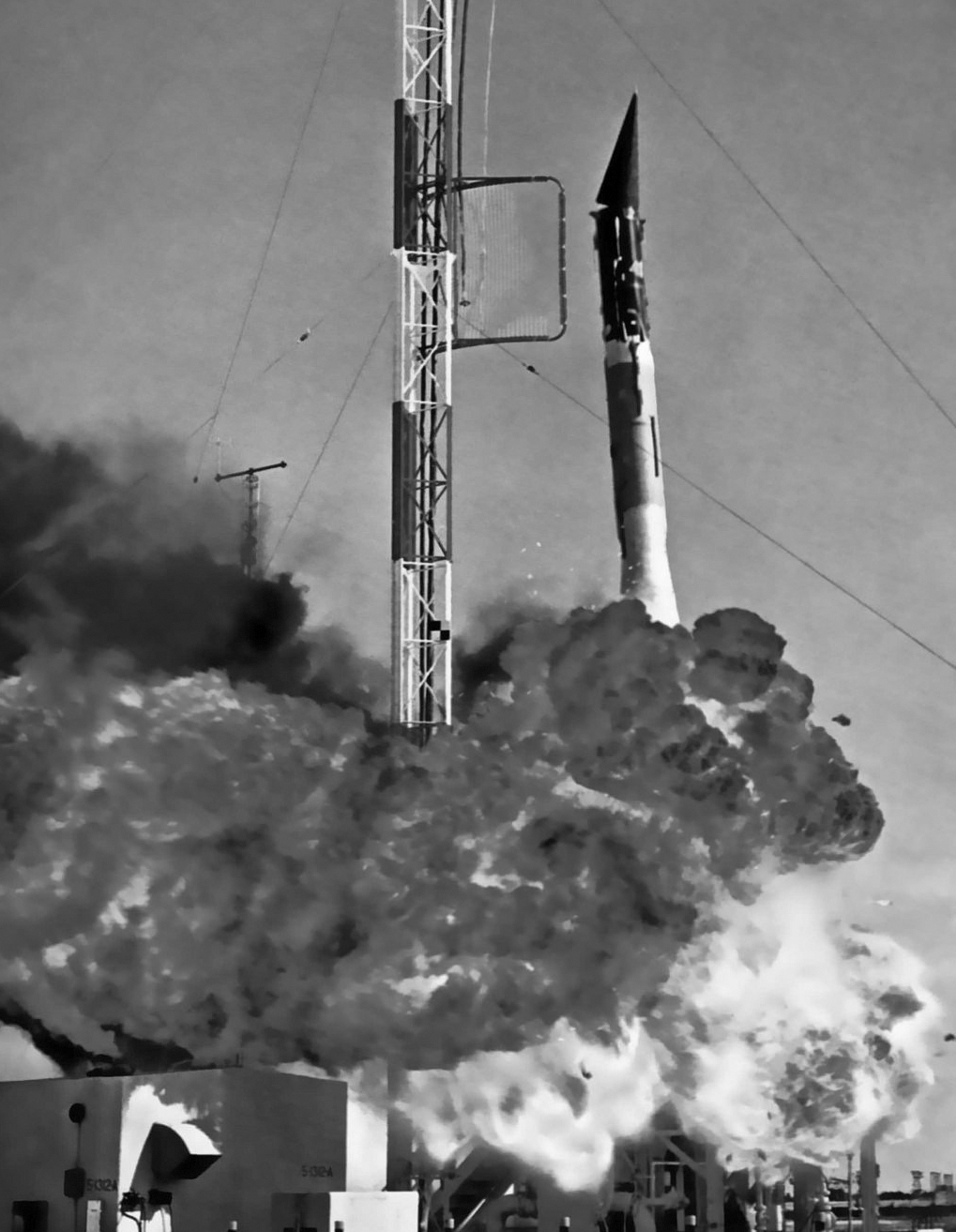1957
“We were locked in a battle of democracy versus communism, where the winner would dominate the world.” —John Glenn
On October 4, 1957, the Soviet Union launched the world’s first satellite into orbit: Sputnik 1. Americans stared skyward in uncertainty as Sputnik circled the globe. To some, it was an omen; to others, it was a challenge. The United States was gripped in fear—if the USSR could put a shiny ball of aluminum into space, it could do the same with a spy satellite—or worse.

Sputnik 1, the world’s first satellite
Sputnik was a small metallic sphere only two feet wide and weighing just 184 pounds. It was launched by a Soviet R-7 rocket into a low Earth orbit, flying at an incomprehensible 18,000 miles per hour and an altitude of 560 miles. It was so fast that it circled the planet once every hour and 35 minutes!
Although the Soviet satellite had barely any function, it was equipped with a small battery-powered transmitter. Not only was it visible from Earth, but Sputnik’s radio signal could be heard as it passed by—it let out a faint sound almost like a techno beat, which was pretty scary to people who didn’t want a Soviet satellite passing so close to their homes that they could actually hear it.
The Soviet press took full advantage of this amazing achievement, stating: “The present generation will witness how the freed and conscious labor of the people of the new socialist society turns even the most daring of man’s dreams into reality.” Sputnik was, above all else, a propaganda victory.

Then the Soviets added insult to injury when they revealed the sequel, aptly named Sputnik 2. On November 3, 1957, Sputnik 2 launched the world’s first animal into space: a dog named Laika. The USSR had left America in the dust.
Throughout the 1950s, three separate branches of the US military had their own rocket programs. The air force had Atlas, the army had Redstone, and the navy had Vanguard, but the public had yet to see any definitive results from these multimillion-dollar programs.
Finally, that December, the United States was ready to launch a satellite of its own.
On December 6, 1957, in Cape Canaveral, Florida, swarms of Americans showed up in anticipation of witnessing America’s first satellite launch aboard the TV-3 Vanguard rocket. After two days of delays (from high winds and a frozen valve), the modest rocket was ready for launch. At 11:45 AM, the launch director hit the ignition button.
A gigantic plume of orange flames burst forth. The crowds began to cheer as the rocket started to rise. Two seconds later, the cheers faded as the rocket lost thrust about four feet into the air. The TV-3 rocket—and America’s space ambitions—toppled over into a massive cloud of fire and smoke. The Daily Herald called it “Flopnik.” The Daily Express exclaimed “Kaputnik,” and the headline of the News Chronicle was “Stayputnik.”
After this embarrassing debacle, von Braun and his team at JPL (the California Institute of Technology’s Jet Propulsion Laboratory) scrambled to answer Sputnik’s challenge. Their response: the Explorer 1, a scientific satellite fitted above a four-stage Jupiter C rocket—four-stage meaning four rockets essentially stacked on top of one another to propel the Explorer 1 into space. On January 29, 1958, Explorer 1 was readied at the Cape Canaveral launch site. After some delays, the rocket was finally ready for launch on January 31.

A Vanguard rocket explodes on the launch pad.
At 10:48 PM, the Explorer 1 made history as it lifted off and soon disappeared into the atmosphere. The scientists held their breath as they awaited the satellite’s reappearance once it traveled around the globe. Ninety minutes passed, and there was still no sign of the floating hunk of metal. They were ready to call it quits when suddenly something blipped on their radar: Explorer 1 had survived! The satellite had reached a higher altitude than anticipated, so they had underestimated the orbital time of arrival.
Explorer 1 improved on Sputnik 1 in every way. Its scientific instruments were far superior, it did something other than just play techno music, and it managed to stay in orbit until 1970—for twelve years! All the early Soviet satellites crashed to Earth months after their launch.
It was hailed as a victory for the United States, but the applause didn’t last long. A few months later, on May 15, 1958, the Soviets launched yet another satellite—cleverly named Sputnik 3—and this one weighed in at 1½ tons. It soon became clear what their next goal would be: putting a man in space.